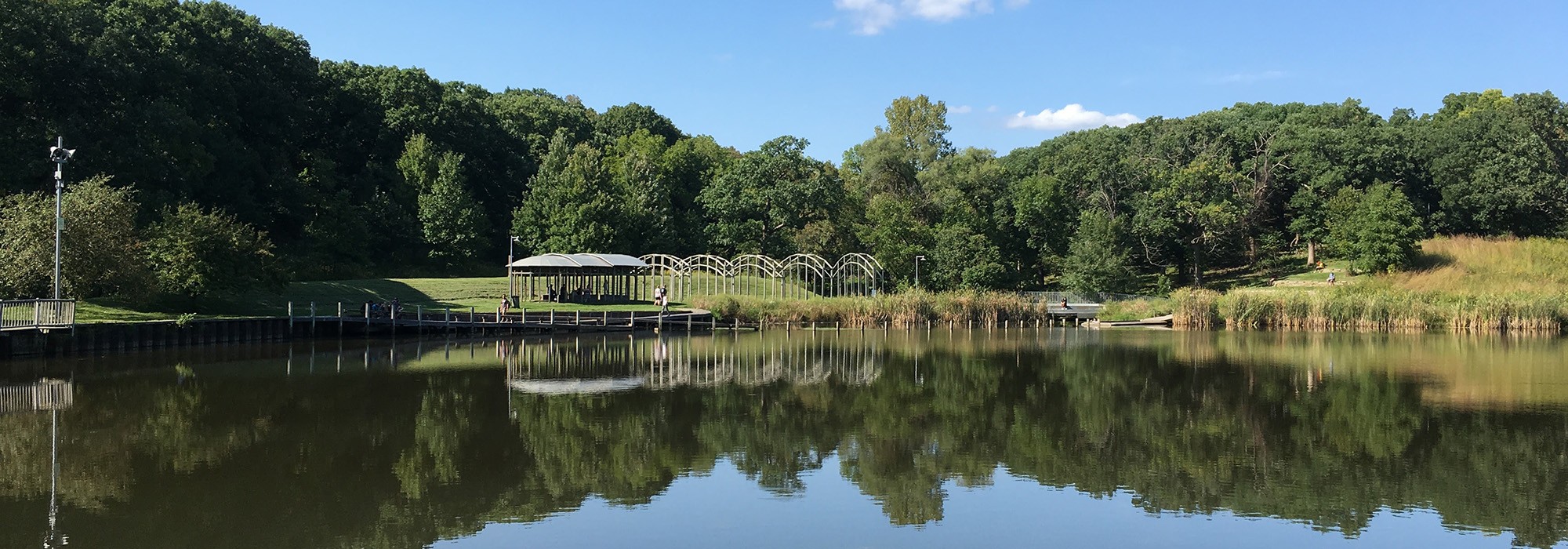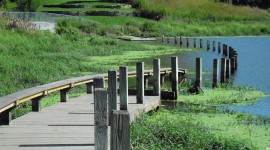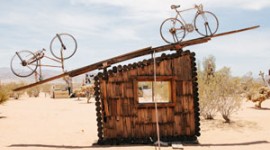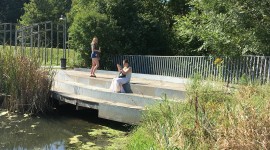Doug Reed, Landscape Architect, Writes in Support of "Greenwood Pond: Double Site"
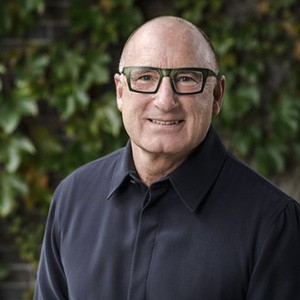
On February 21, 2024, Doug Reed wrote the following letter to the Des Moines Art Center (DMAC) Director Kelly Baum concerning plans to demolish Greenwood Pond: Double Site, a site-specific installation by the internationally acclaimed leader of the land art movement, Mary Miss, commissioned for the Art Center’s permanent collection. The work, which opened in 1996, is in a diminished condition with some sections fenced off, suggesting the DMAC has not fulfilled its contractual obligation to “reasonably protect and maintain” the work. The Cultural Landscape Foundation (TCLF) is calling for the DMAC to reverse it demolition decision and, instead, to engage in meaningful consultations with the artist and others to find a solution that restores the artwork and develops a long-term, ongoing maintenance plan.
Dear Director Baum:
I write to protest the Des Moines Art Center’s decision to demolish “Greenwood Pond: Double Site” (GPDS), the significant work of site-specific art by Mary Miss in its collection. Its removal would be a regrettable, short-sighted and an irresponsible act for any agency, let alone a museum of art, and our country’s cultural heritage would be irrevocably diminished.
I had the privilege to work with Mary early in my landscape architectural career on the design and construction of the critically acclaimed waterfront park at South Cove in New York City. She was a genuine and thoughtful collaborator with her architect and landscape architect partners and with her client, always sensitive to the complex issues that come with making a public place, which range from community needs to budgetary constraints. During the process of realizing South Cove, which spanned over four years, I observed the artist at work, masterfully expressing ideas and generating drawings for a place that would be like no other on New York’s waterfront. South Cove achieves that ambition. It embodies one of the special attributes that GPDS possesses—the work is so particularly tied to its site that it could be nowhere else.
I also want to speak to GPDS within the continuum of Mary’s significant body of work. More so than many of Mary’s works, GPDS represents an immense scope and richness of experience through an environmental form of impressively large scale. It evocatively interprets the site’s specific hydrological and topographical systems, weaving together water, earth, plants, paths, and places into a unified and coherent experience. And, as at South Cove, it is inextricably rooted in its site. I would argue that GPDS reflects a maturity of expression by a major American artist; it exemplifies Mary’s life-long pursuit in her work to subvert any sense of a sculpture being plunked down on a site—a fundamental tenet of the land art movement that she has championed. Through her ideas, her work, and in the practice of her work, she has influenced artists, designers, landscape architects and architects for over fifty years.
The Center must reverse its course and instead pursue the due diligence required of any cultural institution to preserve this important work for posterity. I am linked to all communications regarding this matter, and thus far I haven’t seen evidence of your profound obligation.
Sincerely,
Douglas Reed FASLA RAAR
Principal emeritus, Reed Hilderbrand Landscape Architecture
Founding Board Member, The Cultural Landscape Foundation
< Back to the Greenwood Pond: Double Site Support Letters Page |



